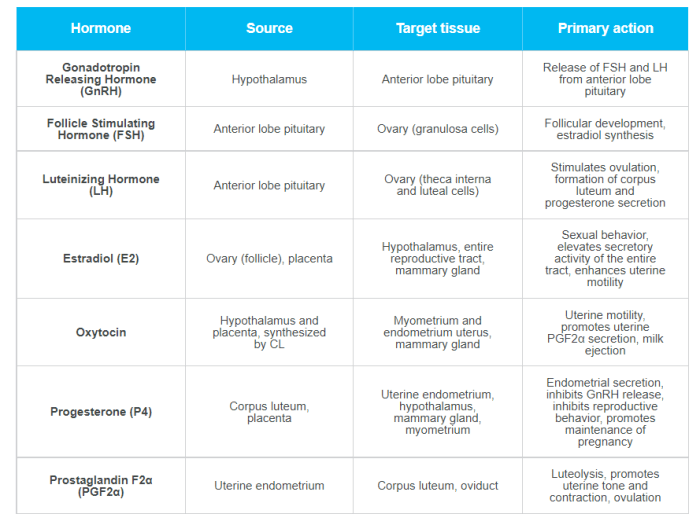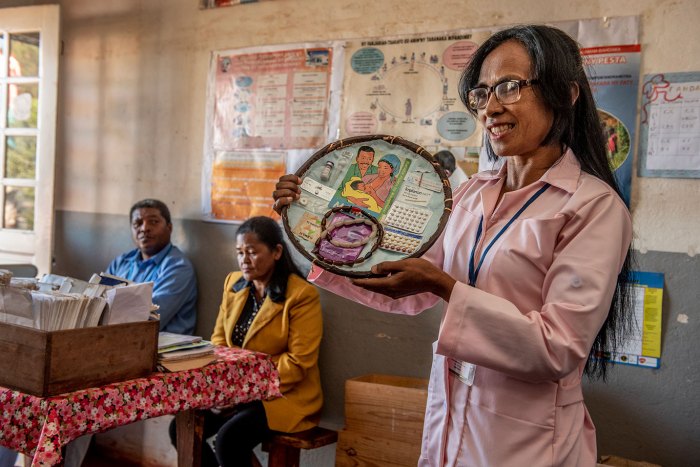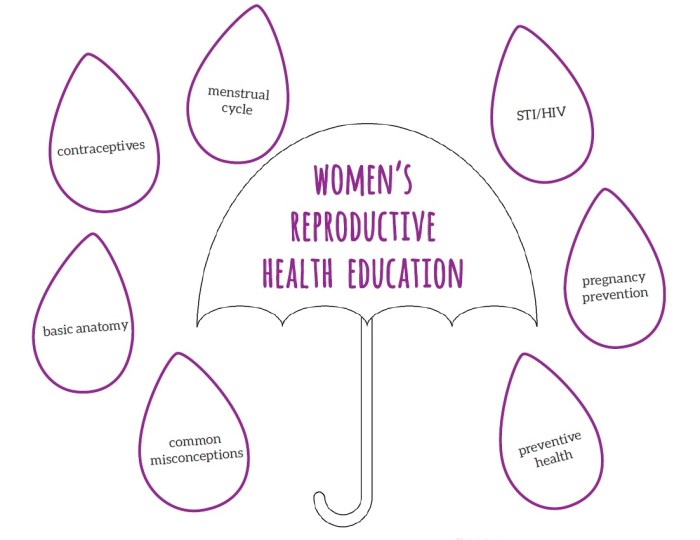Step into the world of Reproductive Health and Rights where knowledge meets entertainment, offering a unique and engaging exploration of this vital topic.
Let’s dive into the intricacies of reproductive health and rights, unraveling its significance and impact on individuals and communities alike.
Overview of Reproductive Health and Rights
Reproductive health and rights encompass the right of individuals to make informed decisions about their sexual and reproductive health, free from discrimination, coercion, and violence. It includes access to comprehensive sexual education, family planning services, maternal healthcare, and the right to choose whether, when, and how many children to have.
Importance of Ensuring Access to Reproductive Health Services
Access to reproductive health services is crucial for individuals to lead healthy and fulfilling lives. It enables people to make informed decisions about their bodies, sexuality, and reproductive choices, leading to improved overall well-being and quality of life.
- Provides essential healthcare services: Reproductive health services offer crucial interventions such as family planning, prenatal care, and safe abortion services to safeguard the health of individuals.
- Empowers individuals: By providing information and services, access to reproductive health empowers individuals to take control of their reproductive choices, contributing to gender equality and autonomy.
- Prevents maternal mortality: Adequate access to maternal healthcare services reduces the risk of complications during pregnancy and childbirth, thereby preventing maternal mortality and promoting safe motherhood.
Relationship Between Reproductive Health and Human Rights
Reproductive health is closely intertwined with human rights, as defined in various international agreements and declarations. The right to reproductive health is considered a fundamental human right, essential for the realization of other rights and the achievement of sustainable development.
- Right to autonomy and decision-making: Ensuring reproductive health rights allows individuals to exercise autonomy over their bodies and make decisions regarding their reproductive choices free from coercion or discrimination.
- Right to non-discrimination and equality: Reproductive health services should be accessible to all individuals without discrimination based on gender, age, race, or socioeconomic status, in line with the principles of human rights.
- Right to health and well-being: Access to reproductive health services is essential for promoting the right to health, including physical, mental, and social well-being, as recognized in international human rights instruments.
Importance of Comprehensive Sexuality Education
Comprehensive sexuality education plays a crucial role in promoting reproductive health by equipping individuals with the knowledge and skills necessary to make informed decisions about their sexual and reproductive lives.
Key Components of Comprehensive Sexuality Education Programs
- Accurate information about sexual and reproductive health, including contraception, STIs, and pregnancy prevention.
- Education on healthy relationships, consent, and communication skills.
- Gender equality and human rights, emphasizing respect and empowerment.
- Decision-making and critical thinking skills to navigate complex situations.
- Safe and supportive learning environments that are inclusive and free from stigma.
Examples of Successful Comprehensive Sexuality Education Initiatives
One successful program is the “Teen Outreach Program,” which combines community service, life skills development, and comprehensive sexuality education to reduce teen pregnancy rates.
Another example is the “It’s All One Curriculum” developed by the Population Council, which covers a wide range of topics related to sexual and reproductive health in a culturally sensitive and age-appropriate manner.
Access to Family Planning Services
Access to family planning services plays a crucial role in ensuring individuals have the information and resources necessary to make informed decisions about their reproductive health. Limited access to these services can have far-reaching consequences for both individuals and communities, impacting their overall well-being and quality of life.Family planning services are essential in promoting reproductive health and rights by enabling individuals to plan and space pregnancies, prevent unintended pregnancies, and access essential healthcare services.
These services also play a key role in reducing maternal and infant mortality rates, improving maternal and child health outcomes, and empowering individuals to make choices about their reproductive futures.
Impact of Limited Access to Family Planning Services
Limited access to family planning services can lead to a range of negative outcomes, including higher rates of unintended pregnancies, unsafe abortions, maternal mortality, and poor maternal and child health outcomes. Individuals may also face barriers in accessing essential reproductive health services, leading to increased health risks and reduced overall well-being.
- Reduced ability to plan and space pregnancies effectively.
- Increased risk of unintended pregnancies and unsafe abortions.
- Higher maternal and infant mortality rates.
- Limited access to essential reproductive healthcare services.
Barriers to Accessing Family Planning Services and Possible Solutions
Barriers to accessing family planning services can vary widely and may include lack of information, cultural or religious beliefs, cost, stigma, and geographical barriers. Addressing these barriers is essential to ensuring that all individuals have access to the family planning services they need to make informed decisions about their reproductive health.
- Lack of comprehensive sexuality education and information.
- Cultural and religious beliefs that may prohibit or discourage the use of family planning methods.
- Financial constraints that limit access to services and contraceptives.
- Stigma surrounding reproductive health services and contraception.
Reproductive Health in Marginalized Communities
Reproductive health issues can impact marginalized communities differently due to various factors such as lack of access to healthcare services, cultural barriers, socioeconomic disparities, and discrimination. Addressing these disparities is crucial to ensure that everyone has equal opportunities to maintain their reproductive health and rights.
Challenges Faced by Marginalized Communities
- Limited access to quality healthcare services for reproductive health needs.
- Stigma and discrimination leading to reluctance in seeking reproductive health services.
- Higher rates of unintended pregnancies and unsafe abortions.
- Lack of comprehensive sexuality education and information on family planning methods.
Strategies to Address Disparities
- Implementing culturally sensitive and inclusive reproductive health programs.
- Providing education and awareness campaigns tailored to the specific needs of marginalized communities.
- Training healthcare providers to offer non-judgmental and respectful care to all individuals.
- Advocating for policies that prioritize reproductive health services for marginalized populations.
Successful Programs and Policies
- The introduction of mobile clinics to reach remote and underserved communities with reproductive health services.
- Community-based initiatives that engage local leaders and organizations in promoting reproductive health awareness.
- Integration of reproductive health services into existing primary healthcare programs to ensure accessibility for all.
- Legislation mandating the inclusion of comprehensive sexuality education in school curricula to empower young people with knowledge and skills.
Intersectionality and Reproductive Health
Intersectionality refers to the interconnected nature of social categorizations such as race, class, and gender as they apply to a given individual or group, creating overlapping and interdependent systems of discrimination or disadvantage. When it comes to reproductive health, considering intersectionality is crucial as it acknowledges that individuals may face unique challenges and experiences based on the combination of various factors.
Impact of Intersectionality on Reproductive Health Outcomes
Factors such as race, socioeconomic status, and gender identity can significantly impact reproductive health outcomes. For instance, individuals from marginalized communities, such as Black or Indigenous people, may face barriers in accessing quality reproductive healthcare services due to systemic racism and discrimination. Socioeconomic status can also play a role, as individuals with lower income levels may struggle to afford contraception or prenatal care, leading to negative health outcomes.
- Racial disparities in reproductive healthcare access and outcomes
- Impact of socioeconomic status on family planning and maternal health
- Challenges faced by individuals from marginalized gender identities
Importance of an Intersectional Approach to Advocacy and Policy-making
Taking an intersectional approach to reproductive health advocacy and policy-making is essential to address the diverse needs of individuals and communities. By recognizing the intersecting factors that influence reproductive health outcomes, policies and programs can be designed to be more inclusive and equitable, ensuring that everyone has access to the care they need.
“Intersectionality is not just a theory, it’s a lived reality for many individuals who navigate complex systems of oppression.”
SPA AND WELLNESS
When it comes to reproductive health, the connection between spa and wellness practices goes beyond just relaxation and pampering. Spa treatments can actually play a significant role in promoting overall well-being and reproductive health. By incorporating spa and wellness activities into a reproductive health regimen, individuals can experience various benefits that contribute to their overall health and wellness.
Benefits of Spa and Wellness Practices
- Reduced stress levels: Spa treatments such as massages, aromatherapy, and hydrotherapy can help reduce stress and promote relaxation. Stress management is crucial for reproductive health as high levels of stress can negatively impact fertility and reproductive function.
- Improved blood circulation: Treatments like body wraps, sauna sessions, and lymphatic massages can enhance blood circulation, which is essential for optimal reproductive health. Improved circulation can help deliver nutrients and oxygen to reproductive organs, supporting their function.
- Hormonal balance: Certain spa treatments, like acupuncture and reflexology, can help balance hormones in the body. Hormonal balance is critical for reproductive health, as imbalances can lead to issues such as irregular menstrual cycles, infertility, and reproductive disorders.
- Detoxification: Spa treatments like detox body wraps, facials, and baths can aid in detoxifying the body and eliminating harmful toxins. Detoxification is beneficial for reproductive health as it can help remove toxins that may interfere with reproductive processes.
- Emotional well-being: Spa and wellness activities promote emotional well-being by providing a space for relaxation, self-care, and mindfulness. Emotional well-being is essential for reproductive health as mental health plays a significant role in fertility and overall reproductive function.
HEALTH PHOBIAS
Health phobias are intense and irrational fears related to health or medical procedures that can significantly impact an individual’s reproductive health decisions. These phobias can lead to avoidance of necessary reproductive healthcare services, resulting in negative consequences for overall well-being.
Common Health Phobias Related to Reproductive Health
- Fear of gynecological exams: Some individuals may experience anxiety and fear related to pelvic exams, pap smears, or other gynecological procedures. This fear can prevent them from seeking regular screenings and necessary reproductive health care.
- Needle phobia: Fear of needles can be a significant barrier to accessing contraceptive methods like injections or IUD insertions, leading to difficulties in family planning.
- Childbirth phobia: Tokophobia, or fear of childbirth, can impact reproductive decisions and lead to avoidance of pregnancy or seeking necessary prenatal care.
Strategies for Overcoming Health Phobias
- Seeking support: Talking to a healthcare provider or mental health professional about your fears can help in understanding and addressing the root cause of the phobia.
- Gradual exposure: Gradually exposing oneself to feared situations, such as accompanying a friend to a medical appointment, can help in desensitizing the phobia over time.
- Cognitive-behavioral therapy: Therapy techniques focused on changing negative thought patterns and behaviors can be effective in managing and overcoming health phobias.
Closing Notes
As we wrap up our journey through Reproductive Health and Rights, remember that ensuring wellness for all is not just a goal but a fundamental right that deserves our attention and support.
Quick FAQs
What are some common health phobias related to reproductive health?
Some common health phobias include fear of pregnancy, childbirth, and sexually transmitted infections.
How does intersectionality impact reproductive health outcomes?
Intersectionality considers how factors like race, gender identity, and socioeconomic status intersect to influence reproductive health disparities.
What is the importance of comprehensive sexuality education?
Comprehensive sexuality education plays a crucial role in promoting reproductive health by providing accurate information and empowering individuals to make informed choices.








